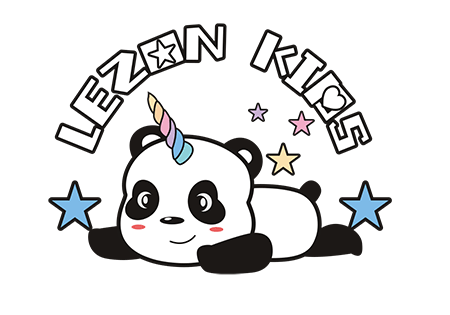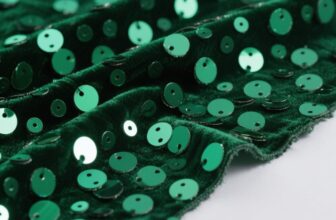Knowledge of Childrens Clothing Wholesale Every Children’s Clothing Retailer Should Know
In the complex landscape of childrens clothing wholesale, the depth of understanding of industry jargon, craftsmanship standards, and supply chain rules directly determines the survival space of retailers. The children’s clothing market is highly competitive, with rapid product turnover and increasingly diverse consumer demands, posing extremely high requirements for retailers’ professional qualities and operational capabilities. This article systematically organizes 36 key knowledge points across 5 dimensions and deeply analyzes how to achieve sustainable growth with controllable risks through a high – quality supply chain, helping children’s clothing retailers stand out in the market and achieve sustainable development.

Industry Jargon Dictionary: Decoding the Professional Discourse System
Ⅰ.Basic Concept Definition Table
| Term | Definition | Practical Significance |
| MOQ | Minimum Order Quantity | LEZONKIDS’s minimum order quantity for children’s clothing is only 1/6 of the industry average at 50 pieces. The low minimum order quantity allows retailers to test market demands with a small capital investment and low inventory pressure, reducing business risks. |
| FOB | Free On Board | Marine insurance rates need to be calculated separately (usually +8 – 12%). |
| TT | Telegraphic Transfer | The industry standard is 30% deposit + 70% balance payment. |
| AQL | Acceptable Quality Level | The company adheres to AQL2.5 (with a maximum of 7 minor defects per 100 pieces). |
Ⅱ.Inspection Standard Comparison Guide
| AQL Level | Allowable Number of Serious Defects/Unit | Allowable Number of Minor Defects/Unit | Applicable Scenarios |
| 1.0 | 0 | ≤2 | High – end co – branded products |
| 2.5 | ≤1 | ≤7 | Regular products (the company’s implemented standard) |
| 4.0 | ≤2 | ≤14 | Promotional and inventory – clearance products |
When inspecting goods, retailers should strictly conduct inspections according to the AQL level stipulated in the contract. For products that do not meet the standards, they should promptly negotiate solutions with suppliers, such as requesting replenishment, replacement, or return of goods, and hold suppliers liable for breach of contract as stipulated in the contract. ( Childrens Clothing Wholesale)

Craftsmanship Knowledge Map: Precise Control from Sequins to Beads
LEZONKIDS has 15 years of experience in OEM/ODM for children’s clothing. Its professional design team creates styles suitable for children’s clothing retailers to sell, especially those with sequins and beads.
Seven Arrangement Methods for Bead – setting Crafts
- Linear Arrangement: Suitable for collar/cuff decoration (with a spacing error ≤ 0.3mm).
- Gradient Matrix: Achieves a natural transition of bead sizes through CAD design.
- Three – Dimensional Stacking: Fixed with 3D – positioning glue, capable of withstanding a 200g pulling force.
- Hollow Inlay: Embed beads after laser – cutting the fabric.
- Themed Pattern: Requires the use of micro – beads with a diameter of 0.8 – 1.2mm.
- Random Scattering: With a density controlled at 35 – 45 beads per square decimeter.
- Mixed Materials: A combination of resin beads and metal beads for acoustic and optical effects.
When choosing bead – setting crafts, retailers need to comprehensively consider product positioning, target market, and cost – effectiveness. For high – end children’s clothing brands or customized products, the hand – bead – setting process may be a key factor in enhancing product value – added and competitiveness. For children’s clothing in the mass market, while ensuring a certain decorative effect, machine embroidery or a combination of partial hand – work and machine embroidery can be appropriately selected to control costs.

Sequin Craft Quality Inspection Manual
| Test Item | Standard Method | Qualified Index |
| Adhesion Test | 5N three – direction tensile test | The shedding rate ≤ 0.5% |
| Wash Resistance Test | Machine – wash at 40°C for 30 times | The color attenuation ≤ 15% |
| Edge Sharpness Test | Detect burrs with a professional thickness gauge | ≤ 0.1mm |
| Environmental Protection Certification | SGS heavy – metal migration test |
Order Risk Prevention and Control: Building a Safe Transaction Firewall
Ⅰ.Common Risk Scenarios and Coping Strategies
| Risk Type | Occurrence Probability | Loss Intensity | Solutions |
| Insufficient Order Quantity | 23% | ★★★ | Choose suppliers with a 50 – piece minimum order quantity and place orders in 3 batches for trial sales. |
| Process Deviation | 17% | ★★★★ | Require double confirmation of pre – production samples and bulk samples. |
| Delayed Delivery | 15% | ★★★★ | Specify compensation for delays in the contract (0.1% daily interest). |
| Copyright Dispute | 9% | ★★★★★ | Verify the IP authorization chain (up to the third – level supplier). |
Ⅱ.Application of the Intelligent Inspection System
Achieved through “Blockchain – based Goods Inspection”:
- Take photos of key production process nodes and store them on the blockchain for evidence.
- Generate a unique traceability code for each product.
- Scan the code to view the inspector’s ID and test data.
Cost – Benefit: It increases the cost by ¥0.3 per piece but reduces the return rate by 62%.

Peak – Season Stock – preparation Formula: Scientific Decision – making Model
Safety Stock Calculation Formula
Safety Stock = (Average Daily Sales Volume × Maximum Replenishment Cycle) – (Average Daily Sales Volume × Average Delivery Time)+Fluctuation Buffer
Taking the Christmas peak season as an example, assume the average daily sales volume is 50 pieces, the company’s delivery time is 30 days, and there is a 3 – day buffer for logistics delays. According to the formula: (50×17)-(50×14)+50×2 = 850 – 700+100 = 250 pieces. This means that during the Christmas peak season, retailers need to prepare 250 pieces of safety stock to cope with sales peaks and potential logistics delays. Accurately calculating safety stock can help retailers avoid out – of – stock situations, seize sales opportunities, and prevent inventory backlogs, reducing inventory costs.
Operational Framework for the Pre – sale Model
- Style – testing Stage: Produce samples with a 50 – piece minimum order quantity for photography and pre – sale.
- Pre – sale Launch: Collect a 30% deposit to lock in orders (reducing inventory risks).
- Dynamic Production Scheduling: Adjust the bulk order quantity according to the number of deposits.
- Fast Delivery: Complete production and delivery within 30 days.
Data Comparison: The pre – sale model increases the inventory turnover rate from 2.1 times to 5.8 times and boosts the return on investment by 176%.

Cooperative Value – added Services: Competitiveness Beyond Transactions
Free Design Value Conversion Model
The free design services provided by the company include:
- A library of over 2000 original designs: Searchable by season/theme/craft.
- 3D virtual samples: Provide rotatable display files within 72 hours.
- Suggestions for improving best – sellers: Optimize design details based on historical sales data.
Case: A customer transformed a regular sweatshirt into a “detachable sequin – pocket” style through free design, increasing the average customer price by $45 and achieving monthly sales of over 2000 pieces.
Underlying Capabilities for Fast Delivery
| Link | Traditional Cycle | Company Cycle | Technical Support |
| Sampling | 7 days | 3 days | Digital printer + AI pattern – making system |
| Fabric and Trim Sourcing | 10 days | 5 days | Strategic cooperation warehouse with over 150 SKUs in stock |
| Production Scheduling | 5 days | 1 day | Intelligent production scheduling system (APS) |
| Quality Inspection | 2 days | 0.5 days | Automated needle detector + AI visual inspection |
Fast – delivery capability is one of the company’s core competitiveness.
In the sampling link, it has been shortened from the traditional 7 days to 3 days, thanks to the application of the digital printer + AI pattern – making system. The digital printer can quickly print pattern designs, and the AI pattern – making system optimizes the plate – making process, improving sampling efficiency. Fabric and trim sourcing has been reduced from 10 days to 5 days, relying on the strategic cooperation warehouse with over 150 SKUs in stock to ensure the timely supply of raw materials.
Production scheduling has been shortened from 5 days to 1 day. The intelligent production scheduling system (APS) automatically optimizes the production plan based on order quantity, process requirements, and production equipment conditions, improving production efficiency. Quality inspection has been reduced from 2 days to 0.5 days. The application of the automated needle detector + AI visual inspection technology improves the accuracy and speed of inspection. Fast delivery allows retailers to delay decisions by 30 days, reducing the risk of misjudging fashion trends by 58%. It provides retailers with a more flexible purchasing time window, enabling them to better respond to market changes.

Conclusion: The Monetization Formula for Professional Knowledge
Wholesale Competitiveness = (Craftsmanship Understanding × Risk Control) × Supply Chain Empowerment
Only by deeply mastering craftsmanship knowledge, strictly controlling order risks, and fully leveraging the value – added services and advantages provided by the supply chain can children’s clothing retailers enhance their wholesale competitiveness in the fierce market competition and achieve sustainable development.
By choosing HAPA, you will get:
- ✅ A 50 – piece minimum order quantity: Test the market with the quick – response model.
- ✅ Free design and sampling: Lower the threshold for new product development.
- ✅ 14 – day delivery: Seize the 48 – hour best – seller cycle.
- ✅ IP co – branding resources: Create premium products with international anime brands.






